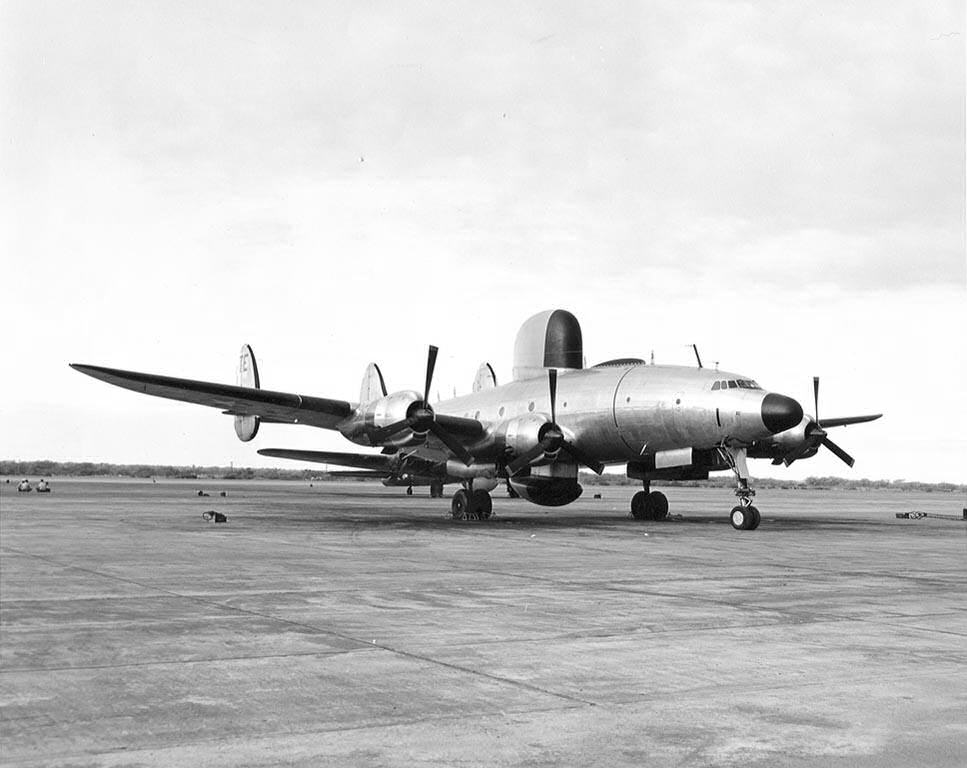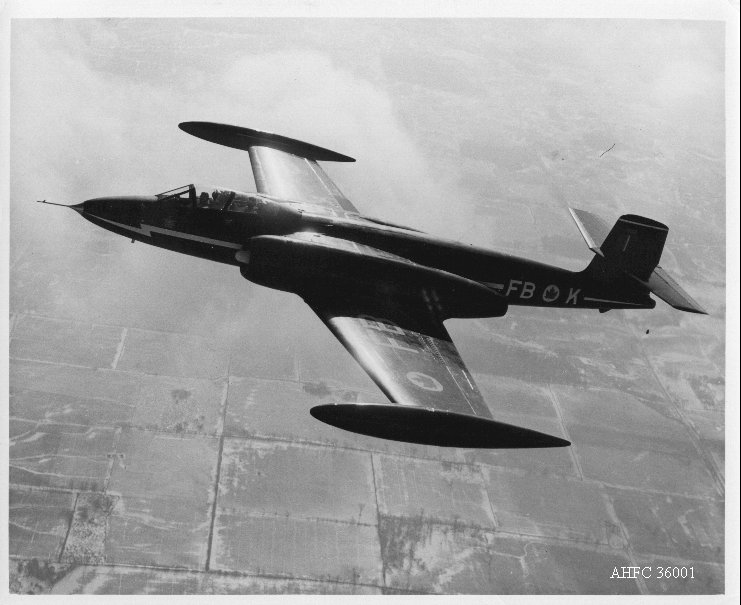|
Peterson Air And Space Museum
Peterson Air and Space Museum is an aviation museum located at Peterson Space Force Base, Colorado Springs, Colorado focused on the history of the Air Defense Command, Aerospace Defense Command and Air Force Space Command. History The museum grew from the North American Aerospace Defense Command Visitor Center established by Col. Donald Parson in 1975. Exhibits The main entrance of the museum is through the original terminal building for the Colorado Springs Airport, built in 1941 for the Colorado Springs Municipal Airport. This building houses a small number of exhibits mainly focusing on the base's World War II history as a training ground for the 14th Photographic Reconnaissance Squadron, including a tribute to 1st Lt. Edward J. Peterson, for whom the base was named after a fatal crash. The building also houses an introductory screening room and museum store. The rear exit of the building leads to the Air Park, where the majority of the museum's aircraft are on display. O ... [...More Info...] [...Related Items...] OR: [Wikipedia] [Google] [Baidu] |
Peterson Space Force Base
Peterson Space Force Base, previously Peterson Air Force Base, Peterson Field, and Army Air Base, Colorado Springs, is a United States Space Force base that shares an airfield with the adjacent Colorado Springs Municipal Airport and is home to the North American Aerospace Defense Command (NORAD), the United States Space Force, Space Force's 21st Space Wing, elements of the Space Force's Space Systems Command, and United States Northern Command (USNORTHCOM) headquarters. Developed as a World War II air support base for Camp Carson, the facility conducted United States Army Air Forces, Army Air Forces training and supported Cold War air defense centers at the nearby Ent Air Force Base, Chidlaw Building, and Cheyenne Mountain Complex. The base was the location of the Air Force Space Command headquarters from 1987 to 20 December 2019 and has had NORAD/NORTHCOM command center operations since the 2006 Cheyenne Mountain Realignment placed the nearby Cheyenne Mountain Complex on standb ... [...More Info...] [...Related Items...] OR: [Wikipedia] [Google] [Baidu] |
460th Space Wing
The 460th Wing is an inactive wing of the United States Air Force. The 460th Space Wing was activated on 1 October 2001, replacing the 821st Space Group. It was inactivated on 24 July 2020 and replaced by the Buckley Garrison. Operations The 460th Space Wing was the United States Space Force's space-based infrared surveillance, tracking, and missile warning wing. The 460th Space Wing operated the Space-Based Infrared System (SBIRS) and the Defense Support Program (DSP). The 50th Space Wing was also the host unit for Buckley Air Force Base, providing base support for the Colorado Air National Guard's 140th Wing, the United States Navy, Navy's Operational Support Center Denver, the National Reconnaissance Office's Aerospace Data Facility-Colorado, the United States Army, Army's Aviation Support Facility, and the United States Air Force, Air Force's Air Reserve Personnel Center. Structure in 2020 460th Operations Group (460 OG) *460th Cyber Squadron (460 CS) * 2nd Space Warning S ... [...More Info...] [...Related Items...] OR: [Wikipedia] [Google] [Baidu] |
Martin EB-57E Canberra
The Martin B-57 Canberra is an American-built, twin-engined tactical bomber and reconnaissance aircraft that entered service with the United States Air Force (USAF) in 1953. The B-57 is a license-built version of the British English Electric Canberra, manufactured by the Glenn L. Martin Company. Initial Martin-built models were virtually identical to their British-built twinjet counterparts; Martin later modified the design to incorporate larger quantities of US-sourced components and produced the aircraft in several variants. The B-57 Canberra holds the distinction of being the first jet bomber in U.S. service to drop bombs during combat. The Canberra was used extensively during the Vietnam War in a bombing capacity; specialized versions of the type were also produced and served as high-altitude aerial reconnaissance platforms (the Martin RB-57D Canberra), and as electronic warfare aircraft. The B-57 Canberra was also sold to export customers abroad; further combat use was s ... [...More Info...] [...Related Items...] OR: [Wikipedia] [Google] [Baidu] |
Lockheed T-33A
The Lockheed T-33 Shooting Star (or T-Bird) is an American subsonic jet trainer. It was produced by Lockheed and made its first flight in 1948. The T-33 was developed from the Lockheed P-80/F-80 starting as TP-80C/TF-80C in development, then designated T-33A. It was used by the U.S. Navy initially as TO-2, then TV-2, and after 1962, T-33B. The last operator of the T-33, the Bolivian Air Force, retired the type in July 2017, after 44 years of service. Design and development The T-33 was developed from the Lockheed P-80/F-80 by lengthening the fuselage by slightly more than 3 feet (1 m) and adding a second seat, instrumentation, and flight controls. It was initially designated as a variant of the P-80/F-80, the TP-80C/TF-80C. Design work on the Lockheed P-80 began in 1943, with the first flight on 8 January 1944. Following on the Bell P-59, the P-80 became the first jet fighter to enter full squadron service in the United States Army Air Forces. As more advanced je ... [...More Info...] [...Related Items...] OR: [Wikipedia] [Google] [Baidu] |
Lockheed F-104C Starfighter
The Lockheed F-104 Starfighter is an American single-engine, supersonic Interceptor aircraft, interceptor. Created as a day fighter by Lockheed Corporation, Lockheed as one of the "Century Series" of fighter aircraft for the United States Air Force (USAF), it was developed into an all-weather Multirole combat aircraft, multirole aircraft in the early 1960s and extensively deployed as a fighter-bomber during the Cold War. It was also produced under license by other nations and saw widespread service outside the United States. After interviews with Korean War fighter pilots in 1951, Lockheed lead designer Kelly Johnson (engineer), Kelly Johnson chose to buck the trend of ever-larger and more complex fighters to produce a simple, lightweight aircraft with maximum altitude and climb performance. On 4 March 1954, the Lockheed XF-104 took to the skies for the first time, and on 26 February 1958, the production fighter was activated by the USAF. Just a few months later, it was presse ... [...More Info...] [...Related Items...] OR: [Wikipedia] [Google] [Baidu] |
Lockheed F-94C Starfire
The Lockheed F-94 Starfire is a first-generation jet powered all-weather day/night interceptor aircraft designed and produced by Lockheed Corporation. It was the first operational United States Air Force (USAF) fighter equipped with an afterburner as well as being the first jet-powered all-weather fighter to enter combat during the Korean War. The F-94 was developed to fulfil a specification issued by the USAF in 1948, seeking a new interceptor capable of day and night operations to replace its piston-engined types in light of recent military advances made by the Soviet Union. The F-94 was derived from the successful Lockheed T-33 Shooting Star trainer; being a relatively simple conversion from an established aircraft led to USAF officials viewing it as a low risk option and opting to procure the type. Maintaining a high level of parts commonality with the preceding aircraft, the majority of the F-94's external changes were related to the adoption of a larger nose that accommod ... [...More Info...] [...Related Items...] OR: [Wikipedia] [Google] [Baidu] |
Lockheed EC-121T Warning Star
The Lockheed EC-121 Warning Star is an American airborne early warning and control radar surveillance aircraft operational in the 1950s in both the United States Navy (USN) and United States Air Force (USAF). The military version of the Lockheed L-1049 Super Constellation was used to serve as an airborne early warning system to supplement the Distant Early Warning Line, using two large radomes (a vertical dome above and a horizontal one below the fuselage). It replaced the TBM-3W used by the USN. Some EC-121s were also used for signal intelligence gathering. The EC-121 was introduced in 1954 and phased out in 1978, although a single specially modified EW aircraft remained in USN service until 1982. The USN versions when initially procured were designated WV-1 (PO-1W), WV-2, and WV-3. The USAF Warning Stars served during the Vietnam War both as electronic sensor monitors and as a forerunner to the Boeing E-3 Sentry AWACS. USAF aircrews adopted its civil nickname, "Connie" (di ... [...More Info...] [...Related Items...] OR: [Wikipedia] [Google] [Baidu] |
Curtiss P-40E Warhawk
The Curtiss P-40 Warhawk was a WWII fighter aircraft that was developed from the P-36 Hawk, via the P-37. Many variants were built, some in large numbers, under names including the Hawk, Tomahawk, and Kittyhawk. Allison-engined Model 75 XP-37 In early 1937, after realizing the Hawk 75 was inferior to more modern European designs, the USAAC ordered one P-36 to be modified with an Allison V-1710 inline engine. The prototype Hawk was fitted with a turbo-supercharged 1,150 hp (860 kW) Allison V-1710-11 engine as the XP-37 (company designation Model 75I). The cockpit was moved back towards the tail to make room for the massive supercharger, and the engine was cooled by two radiators on either side of the nose. Armament was one .30 M1919 Browning MG and one .50 M2 Browning MG mounted in the nose. The XP-37 was plagued with supercharger and visibility problems. YP-37 A further 13 Model 75Is were ordered in 1938 under the designation YP-37. These differed fro ... [...More Info...] [...Related Items...] OR: [Wikipedia] [Google] [Baidu] |
Convair F-106A Delta Dart
The Convair F-106 Delta Dart is an all-weather interceptor aircraft designed and produced by the American aircraft manufacturer Convair. The F-106 was designed in response to the 1954 interceptor program. Envisioned as an imagined "Ultimate Interceptor", it was a development of the Convair F-102 Delta Dagger, F-102 Delta Dagger, and commenced as the ''F-102B'' prior to being redesignated by the United States Air Force (USAF). The F-106 was designed without a gun or provision for carrying bombs, instead carrying its AIM-4 Falcon air-to-air missiles within an internal weapons bay; its clean exterior was beneficial to supersonic flight. Major differences from the F-102 included the adoption of the more powerful Pratt & Whitney J75 turbojet engine, heavily redesigned air inlets along with a intake ramp, variable-geometry inlet duct to suit a wide range of supersonic speeds, and a general increase in size. On 26 December 1956, the first prototype performed its maiden flight. After fli ... [...More Info...] [...Related Items...] OR: [Wikipedia] [Google] [Baidu] |
Convair F-102A Delta Dagger
The Convair F-102 Delta Dagger is an interceptor aircraft designed and produced by the American aircraft manufacturer Convair. A member of the Century Series, the F-102 was the first operational supersonic interceptor and delta-wing fighter operated by the United States Air Force (USAF). The F-102 was designed in response to a requirement, known as the ''1954 Ultimate Interceptor'', produced by USAF officials during the late 1940s. Its main purpose was to be the backbone of American air defences and to intercept approaching Soviet strategic bomber fleets (primarily the Tupolev Tu-95) during the Cold War. The aircraft was designed alongside a sophisticated fire-control system (FCS); however, a simplified unit had to be adopted due to development difficulties. It used an internal weapons bay to carry both guided missiles and rockets. On 23 October 1953, the prototype YF-102 performed its maiden flight; however, it was destroyed in an accident only nine days later. The second proto ... [...More Info...] [...Related Items...] OR: [Wikipedia] [Google] [Baidu] |
Avro CF-100 Canuck
The Avro Canada CF-100 Canuck (affectionately known as the "Clunk") is a Canadian twinjet interceptor/ fighter designed and produced by aircraft manufacturer Avro Canada. It has the distinction of being the only Canadian-designed fighter to enter mass production. Work commenced in October 1946 in response to a Royal Canadian Air Force (RCAF) specification calling for a new jet-powered interceptor/fighter aircraft suitable for long-distance patrol missions and all-weather operations. On 19 January 1950, the CF-100 Mark 1 prototype, 18101, conducted its maiden flight, powered by a pair of Rolls-Royce Avon RA 3 turbojet engines. Both pre-production and production series aircraft were powered by the domestically-developed Avro Orenda engine instead. Flight testing proved the CF-100 to possess a relatively short takeoff run and a high climb rate, making it well suited to its role as an interceptor. On 18 December 1952, Squadron Leader Janusz Żurakowski, the Avro company chief d ... [...More Info...] [...Related Items...] OR: [Wikipedia] [Google] [Baidu] |
NORAD Tracks Santa
NORAD Tracks Santa, also called NORAD Santa Tracker, is an annual official program in which North American Aerospace Defense Command (NORAD) publishes the tracking of Santa Claus, who leaves the North Pole to travel around the world on his mission to deliver presents to children every year on Christmas Eve. The program starts on December 1, but the actual Santa-tracking starts at midnight annually on December 24. It is a community outreach function of NORAD, and has been held annually since 1955. The program follows the tradition of the September 1897 editorial "Yes, Virginia, there is a Santa Claus" in the ''New York Sun''. and was an inspiration of the Google Santa Tracker, which launched in December 2004. History and overview Background On December 24, 1948, the United States Air Force issued a communique claiming that an "early warning radar net to the north" had detected "one unidentified sleigh, powered by eight reindeer, at 14,000 feet , heading 180 degrees." The Asso ... [...More Info...] [...Related Items...] OR: [Wikipedia] [Google] [Baidu] |










